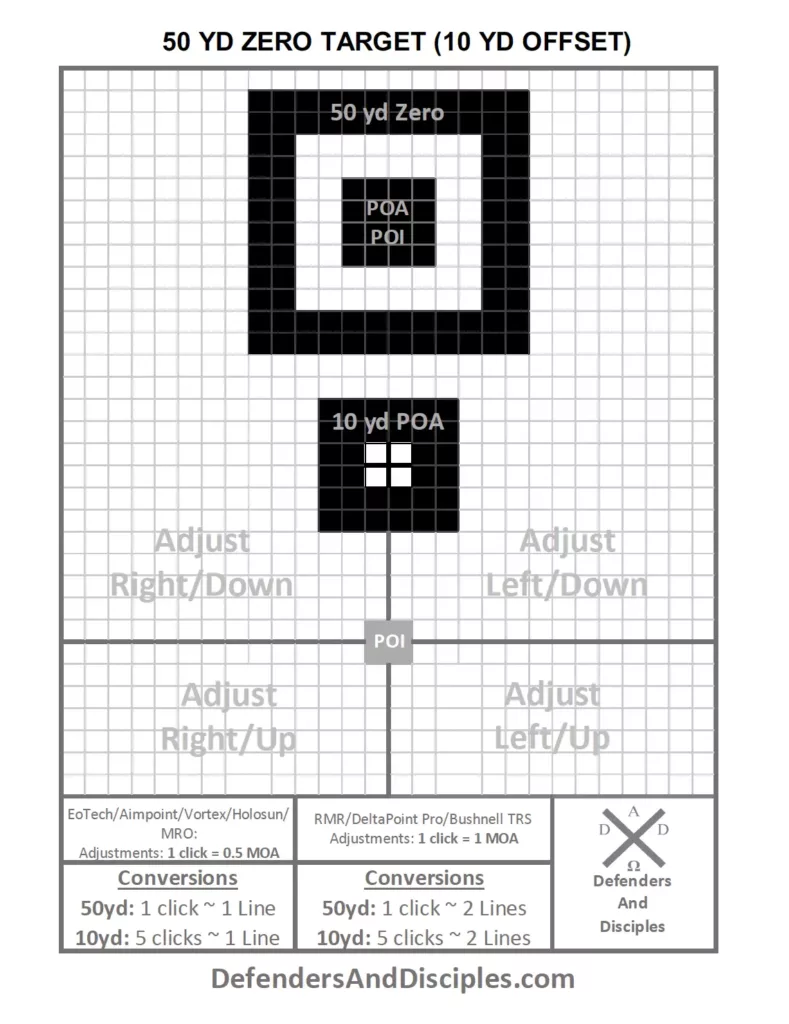The Best Zero Distance For Pistols

In the world of modern handguns, the integration of red dot optics has revolutionized the way we aim and shoot. But one critical aspect that demands attention is zeroing distance. In this Steelopedia entry, we’ll embark on a journey to understand the popular options for pistol red dot zeroing distance. By the end, you’ll have a clear grasp of what distance to zero your pistol ensuring your shots hit where you intend.
The Traditional 25-Yard Zero
The 25-yard zero is a tried and true method for zeroing pistol red dot optics. This distance strikes a balance between close-quarter effectiveness and accommodating longer-range engagements. By zeroing at 25 yards, you establish a point of impact that minimizes deviation within common self-defense distances while maintaining respectable accuracy for mid-range shots.
This zero provides a reliable baseline for shooters engaging targets from contact distance out to approximately 50 yards. It is a versatile choice for those looking for an all-around effective zero, especially in situations where distances may vary.
Benefits and Considerations
The 25-yard zero excels in scenarios where engagements occur within relatively short to medium ranges. It offers a manageable point of impact shift for distances up to 50 yards, which covers a majority of real-world self-defense situations.
However, it’s important to note that at extremely close distances, such as within 7 yards, there might be a slight point of impact deviation due to the angle of the bullet’s trajectory. If you choose to go with a 25 yard zero it is important to spend time on the range at different distances to understand your varying holds at distance or close range.
The 10-Yard Zero for EDC and Self-Defense

The 10-yard zero is designed with personal defense in mind. In situations where encounters are likely to be close and rapid target acquisition is crucial, this zero provides a distinct advantage. By zeroing at 10 yards, you ensure that your point of impact is extremely close to your point of aim within contact distances.
This zero optimizes responsiveness and accuracy for typical self-defense situations, where quick target acquisition and rapid shot placement are paramount.
Ensuring Responsiveness at Short Distances
In high-stress situations, seconds and inches matter. With a 10-yard zero, you maximize the likelihood of hitting your target quickly and accurately within arm’s reach. This zero is particularly advantageous for concealed carriers and law enforcement personnel who anticipate close-quarters encounters.
However, it’s important to remember that the 10-yard zero has limitations when it comes to longer-range engagements. Beyond 15-20 yards, there will be noticeable bullet drop, requiring the shooter to adjust their point of aim higher to land precise hits.
The Long-Range Consideration

In certain scenarios, such as competition shooting or specialized law enforcement applications, a long-range zero might be advantageous. By zeroing at a greater distance, such as 50 yards or even further, you optimize your pistol for extended engagements.
A long-range zero is valuable when precision at distances beyond the typical self-defense range is a priority. Shooters engaging targets at distances exceeding 50 yards will find this zero particularly beneficial.
Bullet Trajectory and Compensation
Understanding bullet trajectory is crucial when employing a long-range zero. With the increased zeroing distance, shooters need to account for bullet drop, adjusting their point of aim to achieve accurate hits. Additionally, windage considerations become more significant at extended ranges.
It’s important to note that a long-range zero may not be suitable for every application. It requires extensive training and practice to master, and it may not be the best choice for close-quarters self-defense scenarios.
Final Thoughts
Selecting the right zeroing distance for your pistol red dot optics is not a one-size-fits-all endeavor. It’s a personalized journey that depends on your intended use, preferences, and the unique dynamics of your firearm. By mastering the nuances of zeroing distances, you empower yourself to make informed choices, ensuring your shots find their mark, no matter the situation. Remember to try different shooting distances regardless of the zero you choose to get a solid understanding of how your firearm will perform across the board. Happy shooting!




